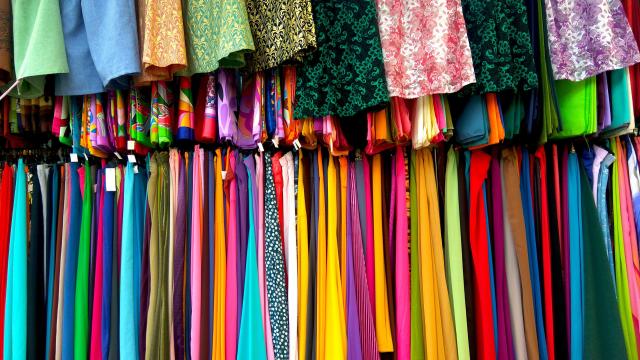Whether or not you give much thought to the colours you put on in the morning, you’re probably aware of some of the cultural meanings that comes with certain hues of clothes. For example, in many Western cultures, wearing black has traditionally been a sign that a person is in mourning (or at least attending a funeral, wake, or memorial service). Meanwhile, red is considered a “power colour,” and wearing it is supposed to send the message to yourself, as well as others, that you’re someone to be taken seriously.
Another more recent example of the application of colour psychology is the concept of “dopamine dressing.” This time, the idea is to use colour, texture, and style to boost your mood.
What is dopamine?
In case you need a quick refresher, dopamine is known as one of the so-called “happy hormones” (along with serotonin) that strongly influences your mood, motivation, and ability to focus.
Generally speaking, when our dopamine levels are on the higher end of the spectrum, we tend to feel good (or at least decent), and more motivated to take on the day. Lower dopamine levels, on the other hand, can leave us feeling depressed, hopeless, and lacking the drive needed to perform even simple daily tasks.
What is dopamine dressing?
There’s a good chance you’re already familiar with some of the recommendations for boosting your dopamine levels naturally, like getting enough restful sleep, moving your body, and listening to your favourite music. Now you can add your clothing to that list.
Essentially, dopamine dressing is wearing clothing based on which colours, textures, and styles make us feel good. And there’s no rule saying that it means dressing in heavily patterned, brightly coloured clothing every day.
That’s because while some people do feel their mood improve when they throw on their favourite electric-blue sweater or neon-yellow socks, this would make others feel uncomfortable, cartoonish, and unlike themselves. Instead, they may feel the happiest and most authentic in a combination of black, tan, and other neutrals, for example.
And that’s one of the tricky parts about dopamine dressing: We may second-guess or dismiss the way we feel about certain colours or styles because of widespread cultural perceptions about it. But, in this case, it’s all about how we feel wearing a colour — not how society tells us it should make us feel (e.g. that black makes us feel sad), or the message that the colour supposedly sends to others.

Leave a Reply
You must be logged in to post a comment.